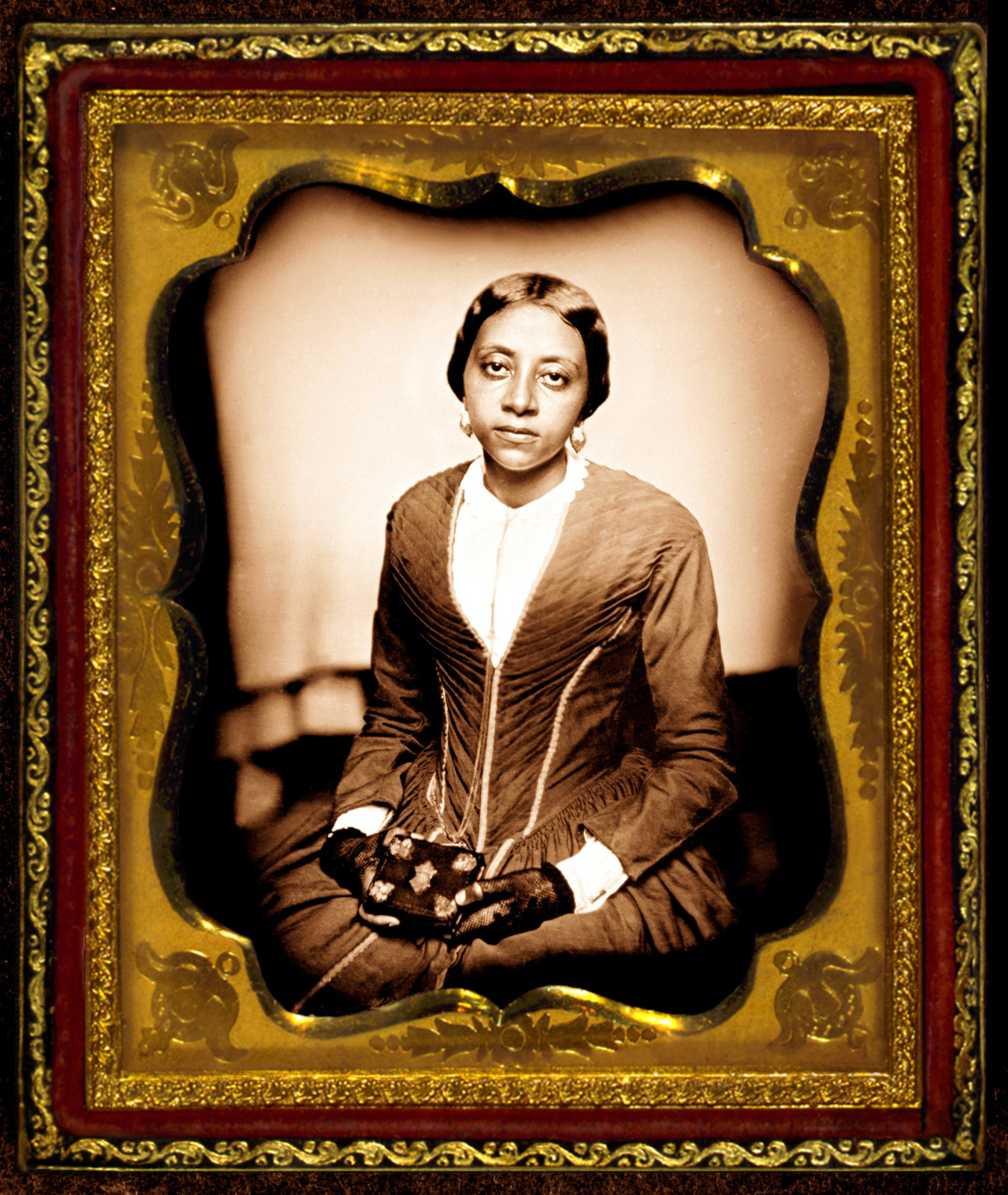 Abolitionist George McGill (1787-1844) bought freedom not only for himself, but for his parents and siblings. Once emancipated, George did well for himself, both teaching and in business in Baltimore. But he wanted more freedom than what was on offer in 19th Century America, so he first investigated the possibility of emigration to Haiti, but it fell through. Later he was hired as to teach in an American colony in Liberia, Africa. After deciding it was a suitable plae to bring his family, a few years later he brought his wife Angelina and their five children over to settle in Monrovia in 1831.
Abolitionist George McGill (1787-1844) bought freedom not only for himself, but for his parents and siblings. Once emancipated, George did well for himself, both teaching and in business in Baltimore. But he wanted more freedom than what was on offer in 19th Century America, so he first investigated the possibility of emigration to Haiti, but it fell through. Later he was hired as to teach in an American colony in Liberia, Africa. After deciding it was a suitable plae to bring his family, a few years later he brought his wife Angelina and their five children over to settle in Monrovia in 1831.
The McGills had four boys and only one daughter, Sarah McGill, born in 1815. While a fair bit is known about the well educated boys, who made good as businessmen, their sister Sarah is all but lost from history.
The McGill Family family emigrated to Africa in 1831, sailing on the American Colonization Society ship Reaper. Three days after arrival in Monrovia, mother Angelina McGill died. The surviving family stayed in Monrovia, and ultimately prospered. All the children were well educated, with the eldest, Samuel, becoming a doctor, brother James a politician and Urias a ship’s captain. They all came together in the successful McGill Brothers import/export business begun by Urias. Like most Liberian immigrants, George not only taught, but became the Superintendent of Schools in Monrovia. His successor in this position was a young man named John Brown Russwurm.
Not much is known about George and Angelina’s only daughter Sarah McGill. Like her brothers, she too was well educated. She married John Brown Russwurm in 1933. What is known is that although there was an age gap of more than a decade between them, (when they married he was 33, she no more than 18), they were very devoted to each other. They moved to Cape Palmas, where John eventually became the first black Governor of the new Republic of Maryland.
Sarah and John had five children, George Stockbridge Russwurm, Francis Edward (Frank), Angelina V. Russwurm, and Samuel Ford Russwurm; but their second born, James Hall Russwurm did not survive infancy.
Mary Sagarin’s 1970 John Brown Russwurm: the Story of Freedom’s Journal offered the first serious look at John Brown Russwurm in the 20th Century.
And now Winston James has written the most comprehensive book about John Brown Russwurm to date, The Struggles of John Brown Russwurm: The Life and Writings of a Pan-Africanist Pioneer, 1799-1851. Mr. James seems to have been the first to speculate Sarah McGill Russwurm was probably the Unidentified woman, probably a member of the Urias McGill family whose daguerreotype portrait resides beside that of her brother Urias McGill in the American Library of Congress holdings.
The McGill family was very close, probably even more than most, the familial bond s no doubt strengthened by the tragic early loss of the children’s mother upon emigration to a whole new continent. While we will probably never know for certain, I am in full agreement with Mr. James.
We do know Sarah relocated to Monrovia to be near her family after her beloved husband John’s tragical early demise in 1851. The photographs in question are dated 1854, just a few years later. In my imagination, I can see Urias trying to help his widowed sister, still a young woman in her 30’s, to find her way out of mourning after the devastating loss of her life partner. When the pioneering Daguerreotype artist Augustus Washington arrived in Liberia, it would have seemed a perfect way to put a sparkle back in Sarah’s eye. But there is no indication that Urias was successful; Sarah McGill never remarried, perhaps because she looks so sad.
About the Photograph
This photograph of Sarah Russwurm is based on the daguerreotype portrait by Augustus Washington, African American Daguerreotypist circa 1854, of an Unidentified woman, probably a member of the Urias McGill family, three-quarter length portrait, facing front, holding daguerreotype case.
The original is held in the American Library of Congress which has made two photographs easily accessible in its online digital holdings. To create the image pictured here above, I combined the the colour photograph’s frame with the black and white photo, creating this digitally restored colour photograph of the framed daguerreotype. The Library of Congress notes that there are “No known restrictions on publication” which confirms that the original image is in the public domain. I consider my digital work simply a restoration, so this work should also be considered in the Public Domain.
I was inspired to undertake this digital restoration work when I saw copies of this daguerreotype photograph reproduced online stamped “copyright” even though it is clearly in the public domain. While the publishers of Envisioning Emancipation are within their rights to copyright their publication, they should not claim copyright on individual photographs in the public domain. Since the copyright notice is only present on the images reproduced in the online version of The Daily Mail, I am inclined to think the British tabloid added the copyright notice in a misguided attempt to “protect” the book. I am happy to have completed this work during Black History Month (just).
Ironically, the photograph the publishers chose to reproduce was a a black and white rendering of the extensively damaged colour print in the Library of Congress holdings. Whether or not this image actually is Sarah Russwurm, it is a historic record in the public domain that anyone should be able to use. You can click on my restoration above to download a large size, or you can purchase a high quality photographic reprints of the original from the Library of Congress here.

This work published on Russwurm Ancestry is identified as a Public Domain work free of known copyright restrictions.
More on the copyright issue
https://laurelrusswurm.wordpress.com/2014/02/27/sarah-mcgill-russwurm-and-the-public-domain/
and daguerreotypes
http://laurelrusswurm.tumblr.com/post/78216482982/daguerreotype-case-in-her-portrait-sarah-mcgill



Pingback: Mrs. J. T. Wade | Russwurm Ancestry